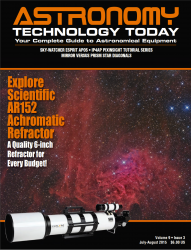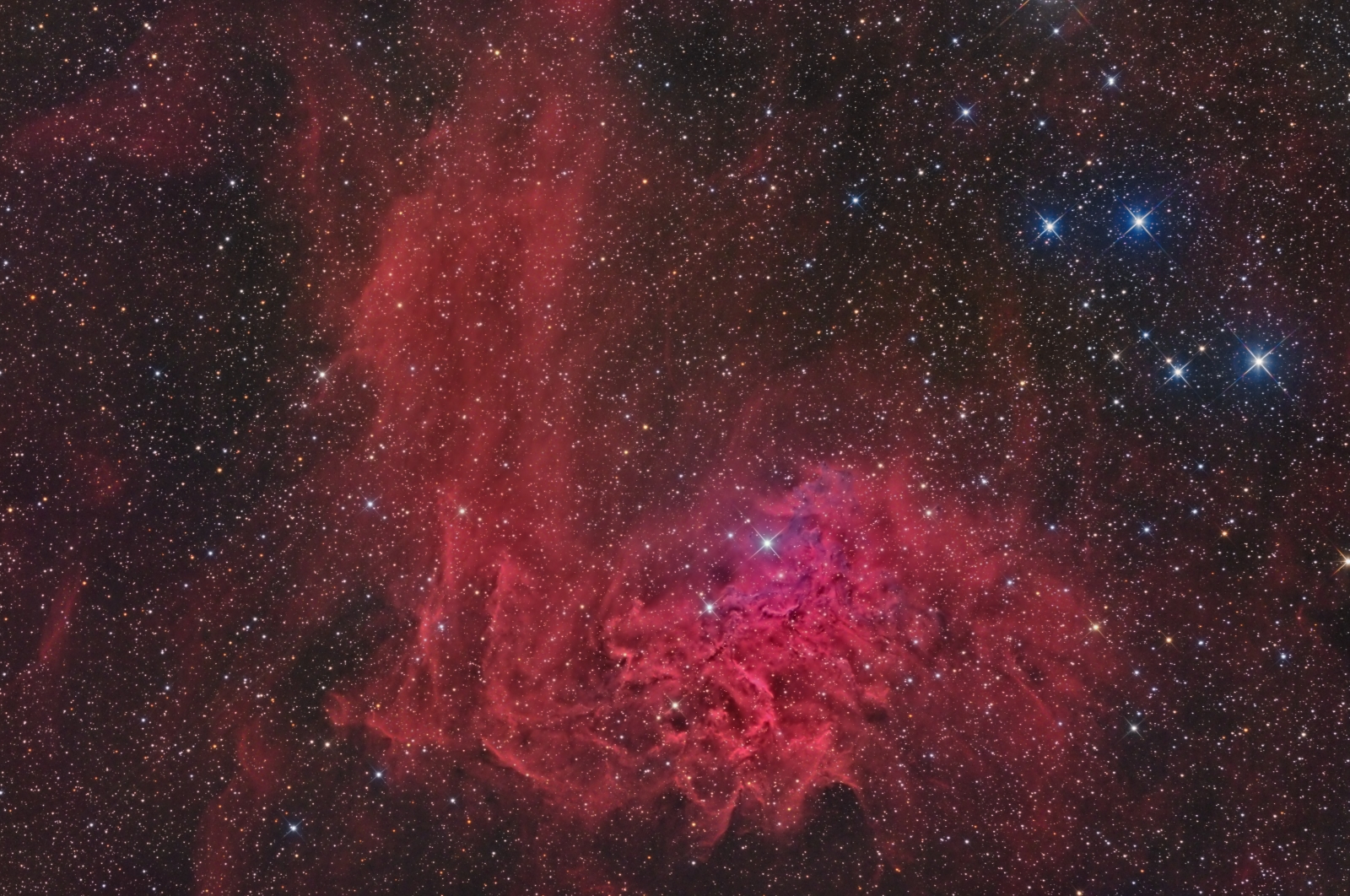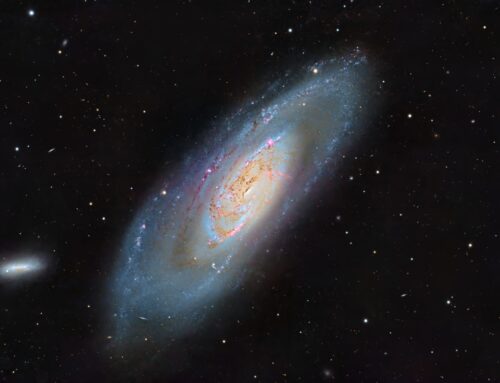IC405, The Flaming Star Nebula (Colour)
Click image for full size version
January 8, 2015; Cover of Astronomy Technology Today, July 2015; Astronomy Magazine Picture of the Day, Dec. 12, 2016

 IC405 is known as the “Flaming Star Nebula.” It is about 1,500 light years away in the constellation Auriga and is about 2.5 light years across. The variable star AE Aurigae is the brightest star in the bright part of the nebula, and is emitting the energy that is causing the surrounding gas to glow. Most of the nebula is dominated by the red glow of hydrogen gas, and there is a blue reflection nebula patch near its “core.” This particular wavelength of red is known as “Hydrogen Alpha” or “H-alpha”, and my Ha filter lets only that wavelength pass through to the camera. I used this deep red filter in making the colour image, as well as to make a black-and-white image of IC405.
IC405 is known as the “Flaming Star Nebula.” It is about 1,500 light years away in the constellation Auriga and is about 2.5 light years across. The variable star AE Aurigae is the brightest star in the bright part of the nebula, and is emitting the energy that is causing the surrounding gas to glow. Most of the nebula is dominated by the red glow of hydrogen gas, and there is a blue reflection nebula patch near its “core.” This particular wavelength of red is known as “Hydrogen Alpha” or “H-alpha”, and my Ha filter lets only that wavelength pass through to the camera. I used this deep red filter in making the colour image, as well as to make a black-and-white image of IC405.
Tekkies:
Synthetic Luminance:
Creation and cleanup: The R,G,B and Ha masters were combined using the ImageIntegration tool (average, additive with scaling, noise evaluation, iterative K-sigma / biweight midvariance, no pixel rejection). DBE was applied to neutralize the background.
Deconvolution: A star mask was made to use as a local deringing support. A copy of the image was stretched to use as a range mask. Deconvolution was applied (100 iterations, regularized Richardson-Lucy, external PSF made using DynamicPSF tool with about 40 stars).
Stretching: HistogramTransformation was applied.
Ha, R, G and B masters were cropped to remove edge artifacts from stacking. The R, G and B channels were combined to make an RGB image. Ha and RGB were processed with DBE, combined with the NB-RGB script, and Colour Calibration was applied. HistogramTransformation was applied, with the goal being to approximately match the brightness of the HaRGB to the SynthL image made previously.
Combining SynthL with HaRGB:
The luminance was extracted from the HaRGB image, processed and then added back into the HaRGB image as follows:
1. Extract luminance from the HaRGB image.
2. Apply LinearFit using the SynthL channel as a reference.
3. Use ChannelCombination in the Lab mode to replace the luminance of the HaRGB with the fitted luminance from step 2.
4. Use LRGBCombine to appl SynthL to the HaRGB image.
Final Processing:
HDRMultiscaleTransform was applied at scales of 6 and 4 using a star mask to protect cores of bright stars. TGVDenoise was applied. LocalHistogramEqualization was applied to the nebula only.
Large-scale structures were isolated by subtracting the small-scale image from the SynthLHaRGB (no rescaling). A duplicate of the small-scale image was used as a mask on the small-scale image and contrast and colour saturation were boosted. Colour saturation and contrast were boosted on the large-scale image. Then small-scale and large-scale images were added back together in PixelMath. TGVDenoise was applied using a mask to protect bright regions. The saturation of a narrow range of blue hues was reduced to reduce the halos around the brightest blue stars.
Image scale is about 2.2 arcsec per pixel for this camera / telescope combination.







Amazing image! Thank you!